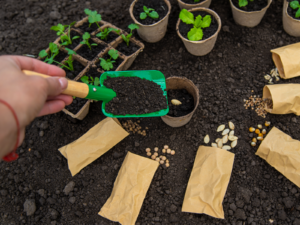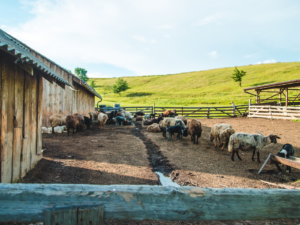
As Berytech prepares to open applications for the fourth batch of the Agrytech Accelerator, we invite you to sign up for the Agrytech Hackathon, a yearly essential pit-stop. It is a pipeline that allows professionals and experts from different backgrounds to learn, experiment and build agri-food solutions that can lead them into creating their own startup and potentially get them into the accelerator, where they can grow their business.
Five Challenge Tracks
For the fourth edition of the Agrytech Hackathon and for the fourth batch of the Agrytech Accelerator, Berytech has partnered with stakeholders in the Lebanese agri-food sector to discuss the challenges they are facing that require innovative solutions. These challenges are proposed to the participants of the hackathon as well as the applicants to the accelerator, who can choose a challenge to work on.
Below you will find 17 different challenges proposed by our partners in the industry, categorized into 5 different tracks: Farming, Food Industry, Rangelands and Forestry, Fishing and Aquaculture, and Management Support.
We encourage you to go through them and apply your critical and innovative thinking to creating solutions, no matter what your background is.
Track 1: Farming
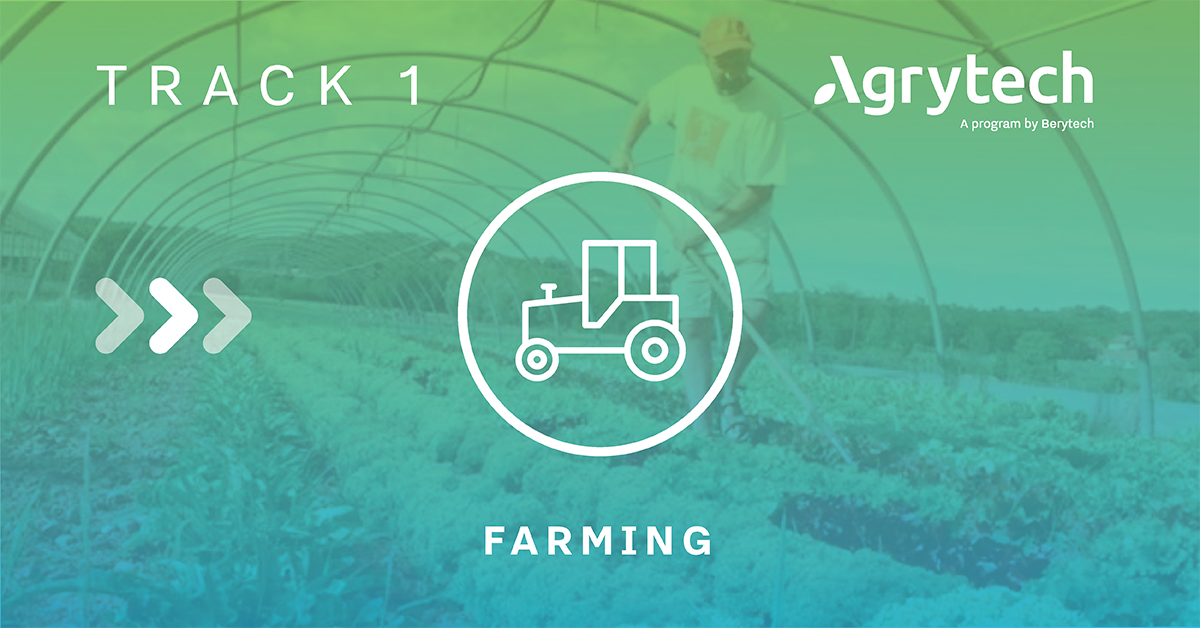
Challenge 1: Land Use & Planning
Crop, land and productivity optimization to fight food insecurity.
Challenge Details: Food Security is a pressing issue in Lebanon and the MENA region, influenced by land availability and climate change. The country only produces 10-15% of its wheat requirements. Land use is a challenge, as there aren’t large areas of arable lands coupled with limited planning. But even if all arable lands were cultivated with wheat, there would still be a shortage in matching the demand. Meanwhile, farmers are oriented towards cash crops like potatoes or vegetables especially if they have enough irrigation water, so they are not motivated to grow wheat.
Finding alternative crops, optimizing land use and improving productivity in agriculture is much needed to ensure food security.
What is needed: Use technology to improve the management of land use and contribute to food security by identifying alternative crops that could be grown in different Lebanese regions.
Challenger: International Center for Agricultural Research in the Dry Areas – ICARDA
Challenge 2: Water Pollution and Scarcity
Use greywater solutions and technologies in different business models to solve the water pollution issue by recycling industrial water.
Challenge Details: Water pollution is a serious problem in Lebanon specifically in the Litani water basin, due to the waste from factories, homes and agriculture production caused by the extra use of nitrates.
There are technologies available for different water treatments, including greywater. It is a simple system that treats water from home basins to be then used for home garden irrigation. Can we create an incentive for people to install it through a creative business model? Or recycle the water of industries and complete the cycle?
What is needed: Develop a business model to finance and promote such solutions.
Challenger: International Center for Agricultural Research in the Dry Areas – ICARDA
Challenge 3: Import Substitution
Optimization of legume supply chain in Lebanon.
Challenge Details: Chickpeas are an important raw material for the food industry, used in the making of Hummus that is consumed worldwide. In Lebanon, chickpeas are imported from the US at 70 cents/kg (before the current crisis) and processed by industries into Hummus that is then exported to world markets. Locally grown chickpeas are more costly and used to be at least 2-3 $/kg. The difference is large and for most industries, it is cheaper to just import as the price and volume are more optimal. Now that the economic crisis has affected import prices, all are turning into import substitution. However, land size continues to be a challenge. Cost-effective production of chickpeas or other pulses while producing enough volume for industries is needed.
What is needed: Create a business model that pushes economy of scale and contract farming to promote the growing of all kinds of legumes and provide better market conditions especially with the recent change of manpower cost in Lebanon.
Challenger: International Center for Agricultural Research in the Dry Areas – ICARDA
Challenge 4: Scaling Up Small Productions
Improving visibility for small producers to understand their markets, competition, needs and prices and forecast their supply to implement economies of scale and optimize their costs.
Challenge Details: Organizations working in the agricultural field deal with different clusters of farmer cooperatives. Collecting supply from the farmers to the packing-house is a challenge by itself as the volume of supply is not clear in advance.
Also, one main challenge for cooperatives themselves is the lack of access to alternative markets: limited diversification and selling space, as well as limited relationships with key actors along the value chain. These cooperatives have no access to market research studies nor the knowledge to carry out themselves, so markets become oversaturated with generic “mouneh” products.
When the work needs coordination between different cooperatives, they need to plan the supply ahead of time and forecast quantities needed to produce to have consistency in supply in fair trade markets which are not present. Finally, cooperatives have not been able to scale up in terms of quantities due to the increasing cost of raw material and difficulty in finding affordable sources.
What is needed: Create a solution or business model that helps cooperatives organize their work, supply chain, forecast and demand and reach new markets.
Challenger: Jean Paul II Foundation, World Food Program – WFP, Oikos Institute Lebanon
Challenge 5: Post-Harvest Conditioning
Lack of availability, accessibility and cost visibility for post-harvest packing and conditioning units in remote areas.
Challenge Details: Small and medium farmers are usually unable to take care of their produce post-harvest. By the time the product reaches the market or the exporter’s warehouse, they lose a big part of their shelf life. This point is key for export and to maintain a good quality product. The lack of adequate packaging, conditioning and transportation facilities for the farmers and the high cost of creating one for each small farm is limiting the farmer’s ability to ensure the quality needed for export. Besides, some post-harvest centers exist but are very distant from agricultural fields.
What is needed: Use technology and hardware to solve the issue of availability for post-harvesting centers.
Challenger: RMF focus groups
Challenge 6: Agriculture tools and equipment
Olive and olive oil value chain optimization
Challenge Details: CELIM is an Italian organization that is currently implementing a project in Hasbaya & Marjeyoun region to help farmers improve olive oil production, find markets for the oil locally or internationally, and help on transforming waste to organic fertilizers. They are trying to introduce new techniques in agriculture, and helping farmers to improve the land management. The main challenge in these two abovementioned regions is the topography: Mountainous lands with terraces, which makes plowing even more difficult and hinders the use of tractors.
Quality of the yield is mostly determined by the pest application, spraying techniques and harvest time. Usually, farmers are encouraged to harvest when 20-30% of the fruit turns red to black. Some farmers in Lebanon harvest in November, some even in December, just by experience, rather than based on any scientific method.
What is needed: Hardware/software that can help the Lebanese farmers optimize their agricultural practices (plowing, harvest, harvest time …)
Challenger: CELIM/ LebRelief
Challenge 7: Tagging Systems
Animal tagging system and traceability improvement
Challenge Details: The Ministry of Agriculture has tagging systems for animals, mainly for registration and traceability purposes. However, farmers sometimes do not register new borne animals, and thus no tagging or traceability is maintained. Additionally, with the current crisis, the tagging system is need of upgrading, which is beyond the Ministry’s financial capabilities.
What is needed: A simpler system for tagging that can include sensors for new borne to include in the traceability, and one where information can be updated regularly.
Challenger: OIE
Challenge 8: Cattle farming optimization
Heat Detection devices for cattle
Challenge Details: Cattle farming productivity is highly depending on artificial breeding. And artificial breeding cannot be successful without an accurate and immediate detection of heat. This is done usually by observation in Lebanon. But observation is only done during day hours. And every heat missed costs the farmer 1 month of non-production and waiting. Some devices are usually imported to detect heat and they all rely on mounting activities detection.
What is needed: Hardware that can solve the issue of heat detection and help farmers optimize their breeding plan.
Challenger: USJ-ESIAM
Challenge 9: Small ruminants practices and pasture for better productivity
Improvement of small ruminants practices and pasture for better productivity
Challenge Details: The small ruminants farming sector is still underdeveloped. The practices are still very traditional. Shepherds needs to count sheep’s or goats to verify the numbers, no tagging system, no diseases primary detection, no scientific breeding, no register for new born animal, no vaccine schedule… which is affecting the productivity and the cost of the product, being it milk or meat. In addition, the sales channel of these products is still limited to networks and not developed to a well structured marketing approach.
On another note, pasture consumed by small ruminants affect the milk productivity. changing the plants types or finding a better places can increase the production of milk of small ruminants. Can technology help in designing smart solution for small ruminants management and productivity?
What is needed: Use hardware and software to improve the management of small ruminants and their production yield
Track 2: Food Industry

Challenge 1: Innovative Packaging
Better differentiation for food products and improving shelf life through packaging innovation.
Challenge Details: The challenge among food industries is finding innovative ways of packaging and presenting products. With a low barrier to entry in the market, anyone can develop a product and sell it in supermarkets, with little differentiation in packaging. All jams in glass or all grains in bags, or all liquids in bottles that all look alike with little differentiation, besides the label.
Additionally, the majority of the packaging material is imported, and in standard shapes and sizes. There is a need to look for different raw materials to create innovative packaging that can last longer, be more presentable, and preserve the freshness and taste.
What is needed: Use technology to develop new and different packaging materials.
Challenger: USAID Funded Community Support Program
Challenge 2: Customer Behavior & Marketing
Improved understanding of consumer needs and behavior and change in market dynamics.
Challenge Details: Understanding the consumer and knowing who you are selling to is the key to successful marketing and business management. More often producers are good engineers, good in production management but not marketing.
When it comes to market studies, a lot of ready-made expensive market research is available. Companies may do also their own market research. In such cases, this would provide general quantitative information on the market, the market shares of competitors, and the size of the market.
The challenge is to have a better understanding of consumer behavior: Who are these consumers? What are they like? Are they coming back and purchasing the product or is it just a one-time thing?
To drive better sales, make marketing activities more efficient and reduce food waste, companies need to establish a better relationship with consumers and understand their needs and behaviors.
What is needed: Use technology to help food processors establish a relationship with their consumers and make it more sustainable.
Challenger: USAID Funded Community Support Program
Challenge 3: Logistics and Cold Chain
Secure food safety by maintaining the cold chain for different product categories while optimizing routing.
Challenge Details: All food companies have their own fleet. They go to market with their full portfolio. Many of these companies have products that should be stored at different temperatures (room temperature and chilled or chilled and frozen…). Maintaining the right temperature of the product with the right humidity is more than important to secure food safety but also to reduce waste and extending the shelf life.
At the same time, companies always try to maximize the efficiency of their distribution fleet even if that means mixing products in the truck.
What is needed: Create an integrated solution between hardware and software specially designed for food industries to minimize the food waste due to cold chain rupture or inadequacy.
Challenge 4: Quality Management Systems Automation
Lack of automation in quality monitoring and analysis systems.
Challenge Details: The majority of food safety and quality systems in the agricultural and food industries are still documented manually. All records are done and registered on paper. That semi-automated process implies a loss of time because it required manual recording of data, then electronic reporting. Plus, it not only overuses paper, it delays the reporting and reaction speed at managerial and decision-making levels, which can higher the risk of product non-conformity and food waste.
What is needed: Create an integrated solution for the registration, follow-up, analysis and reporting for quality and certification systems.
Challenge 5: Trucks loading and unloading activities
Loading of trucks with heavy bulk products without palettes
Challenge Details: Flour mills in Lebanon used to rely on foreign labor taskforce to load huge trucks with flour bags. A truck can take up to 20 tons of flour if the bags are stacked. After the currency devaluation, foreign labor became unsatisfied with the income and is leaving the country. This is causing an issue for flour mills. And if they adopt pallets stacking method in order to use forklifts, they reduce the trucks capacity to half.
What is needed: Use robotic solutions to help in solving the issue of truck loading for large sensitive products
Challenger: Crown Flour Mills
Track 3: Rangelands and Forestry

Challenge 1: Pest Prevention in Forests
Prevention of forest deterioration caused by fires and pest invasion.
Challenge Details: Fires and pest invasion are the major risks facing Lebanese forests. There is a need to have proper prevention mechanisms put in place as one type of pest can negatively impact the whole forest, including trees and shrubs. There are early warning systems for forestry utilized abroad but the scale is by far larger than that of Lebanon.
What is needed: Develop an early warning system for Lebanese forests that is more simplified and adapted for Lebanon, namely for detecting pests attacking pine trees.
Challenger: Food and Agriculture Organization – FAO
Challenge 2: Irrigation in Forest Lands
Identification of forest needs in water to optimize temporary solutions.
Challenge Details: Drip irrigation is used in forests and sometimes in farrow irrigation as well. Some sites are difficult to reach and irrigate. In South Lebanon, rainfall is low and there is a need to irrigate more intensively in the first 2 years. However, drip irrigation in such cases is expensive, especially if it’s just required for 2 years. Some use small potteries that are cut in half and placed next to tree/plant that allows for the slow release of water which is not a sustainable solution.
What is needed: Use satellite imaging or other technologies to help in identifying and detecting water needs for the forest trees in Lebanon.
Challenger: Food and Agriculture Organization – FAO
Track 4: Fishing & Aquaculture
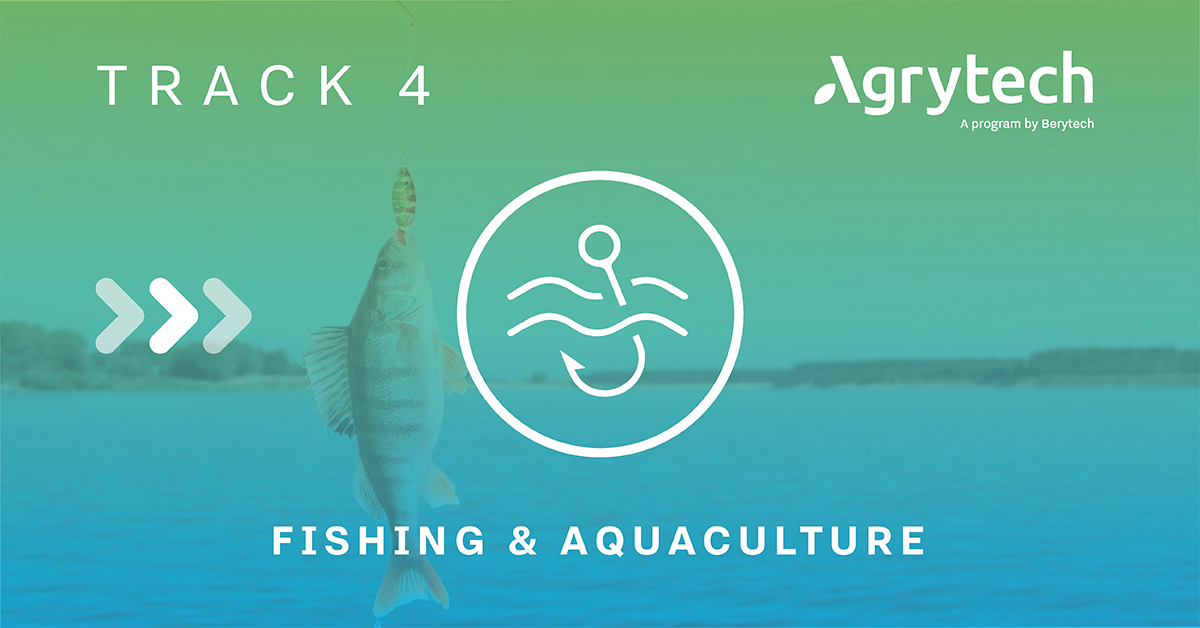
Challenge 1: Locating New Fishing Sources
Creation of a solution enabling fishermen to locate new and safe fishing locations that fit their available safety equipment.
Challenge Details: The fishing sector faces many challenges due to the scale of activities and the traditional nature that prevails in the sector.
There are around 17,000 fishermen and only 3000 licensed fishing boats in Lebanon. Most of the fishing vessels are small and traditional with basic equipment on board. The main problem is the over-capture of fish on the coast. Boats are not well equipped with security tools to allow further dwelling in the sea, so the fishermen end up catching small fish and depleting the sea of further resources. All are fishing within the same space, not more than 3-5 km, while by law they can go as deep as 20 km, on the condition of having all security measures onboard. This is costly and unaffordable.
Alternatively, they are unable, with their current small fishing boats, to locate different fishing sources with no GPS or any equipment that can help them. Can mobile phones be utilized to address this challenge? Scanning or using specific applications simple enough for fishermen to use and at the same time reduce over-capture?
What is needed: Use technology to develop a solution that helps fishermen find out where to fish, when to fish, and the type of fish to capture.
Challenger: Food and Agriculture Organization – FAO
Track 5: Management Support – Learning & Extension
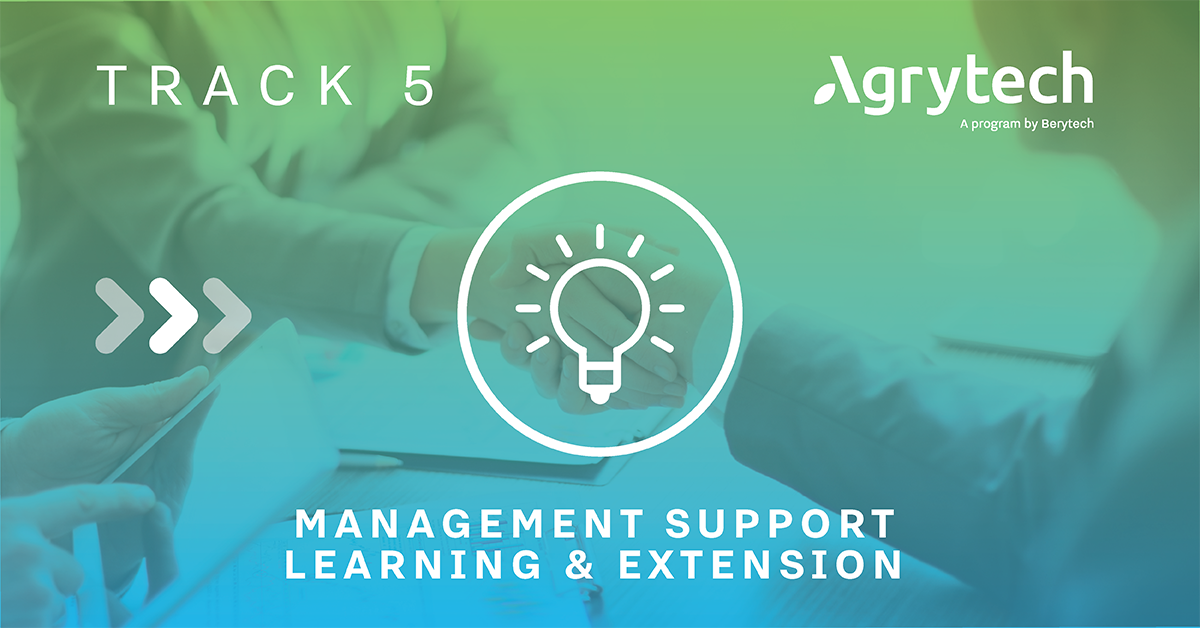
Challenge 1: Extension
Creation of a solution that enables extension in agriculture without relying on physical presence.
Challenge Details: Covid-19 has enforced a new way of life and continues to do so, a change that systems around the world are trying to cope with and adapt. Online learning and training have become a new way of education, but its impact is yet to be determined.
In agriculture, the extension is an important activity usually carried out by the Ministry of Agriculture and other international and local non-governmental organizations. It’s a mix of one-on-one coaching, group training for capacity building, consultations, among others. But this cannot be undertaken amidst Covid-19 due to risks of virus spread. How can the extension be supported? Most of the farmers do not have access to online libraries or learning, and some do not have smart mobile phones. So how can we reach out to all farmers and link them to this new system of extension? How can NGOs use such tools to provide support to the farmers and other actors in the agriculture sector as well?
What is needed: Develop a solution where farmers can contact extension agents beyond the phone calls and get effective advice.
Challenger: Food and Agriculture Organization – FAO
Challenge 2: Voucher Schemes
Optimization of the voucher schemes process used for farmer support, from selection and generation, to monitoring and reconciliation.
Challenge Details: Vouchers are used worldwide for all purposes, be it promotional for FMCG, private sector, or relief support or through the distribution of food or cash amounts. In Lebanon, the voucher concept has been widely used, namely in food distribution to vulnerable groups, such as the E-card used by WFP, or recently the distribution of input supplies by FAO. FAO has developed guidance notes for building a voucher scheme, including farmer selection, supplier selection, grievance mechanisms, and post-distribution monitoring.
Any voucher scheme needs a process including a transaction. Currently, the farmers are given a checkbook with 10 vouchers. Each checkbook has the name of the farmer and each voucher has a barcode: 20 barcodes, 1000 farmers, and all this is done manually, thus very time-consuming. Some farmers can purchase 30 items with 20 barcodes or 1 product with 20 barcodes. There are 20,000 barcodes but only 3000-4000 transactions. Can such a process be done electronically, paying suppliers while farmers are aware of the transactions and how much they have remained in case they want to buy more?
The second part of the process is the monitoring: what is remaining in terms of amounts, vouchers, products, and then post-monitoring is carried out. Again, all of this is done manually. Can technology help to have an inclusive voucher management scheme that governs the whole process of voucher production, distribution, reconciliation, and post-distribution monitoring? This can be then used by all other organizations that utilize voucher schemes in their activities, locally or abroad.
What is needed: Develop a solution where voucher schemes can be automated and efficient in terms of post-distribution monitoring.
Challenger: Food and Agriculture Organization – FAO
Challenge 3: Elimination of duplicated efforts between NGOs
Improving the outreach of organizations supporting the Lebanese population in terms of food security (or any kind of support).
Challenge Details: There are a lot of ongoing food security initiatives, given the severity of the economic crisis and its impact on the different vulnerable communities in Lebanon. More often, reports are published by local or international organizations on the activities implemented in that aspect, number of beneficiaries, and other non-beneficiaries reached out to. However, there are no further details on the beneficiaries and more often duplication occurs. There is a need for a simple agile platform that can include more interactive information on the beneficiaries, without impacting confidentiality and the sensitivity of the beneficiary’s privacy. Can technology be used to make this process more efficient – a platform combining all such organizations as well as beneficiaries to increase impact and decrease unfairness?
What is needed: Develop a solution where data can be used to avoid the overlap of relief actions and support more targeted relief.
Challenger: Food and Agriculture Organization – FAO
Challenge 4: Online Learning for Technical Schools
Design of a solution to improve the practical distant learning for agricultural technical schools.
Challenge Details: The Agriculture Technical Schools have been undergoing significant improvements, with support from international organizations and donors, to be more equipped and more labor market-driven for the sector. The curricula have been upgraded and schools refurbished.
However, with the Covid-19 pandemic, physical learning is a challenge, and even more so when applied courses have to be administered. How can Agriculture schools adapt to such change and what technology can be used to have more simplified e-learning, as well as monitoring, applied courses in the field?
What is needed: Create tools and solutions to be used by technical schools for field and online learning.
Challenger: Food and Agriculture Organization – FAO
Challenge 5: Finance and Business Model
Solve the issue of cash flow for farmers.
Challenge Details: Farmers were used to get their inputs from suppliers on credit. They sold their products to wholesalers in advance to use this money to cover their expenses.
After the economic crisis, their whole cash-flow cycle was disrupted due to the obligation of paying cash.
Can experts create a disruptive financial model and business model that can help the farmers in surviving this phase and keep growing their business?
What is needed: Creating a disruptive financing and credit model to solve the cashflow issue in the agricultural sector.
Challenge 6: Connecting Service Providers
Improve connections between farmers and service providers
Most of the farmers, specifically in Akkar, are isolated and have little visibility of knowledge to be able to connect to various markets. They often incur losses as they do not have access to markets, but even worse, they do not have enough information on the service providers such as those providing pruning services, tillage, etc…
What is needed: An application to connect people based on geographic location and help to utilize more efficiently the services and eventually the market
Challenger: LebRelief
Challenge 7: Financial Modeling
Solve the financial modeling gap in small businesses
Today and due to the economic crisis, farmers and small food processors are finding hard time to decide on how to optimize their SKUs in a way to maximize their profit or even minimize the loss. While the packaging cost is becoming a burden on the total product cost (since all packaging materials are imported)
What is needed: Create a smart solution to help financially unskilled people in finding the best financial model to cope with market change.
Challenge 8: VET Extension
Increase awareness on animal health and diseases
There is very little awareness from the farmers/herders on animal health. More often they are unaware or do not know the symptoms, do not observe enough to call the VET and provide the proper vaccine. Thus there is need for more effective diseases prevention and treatment. Extension and awareness on animal health in Lebanon is most often neglected and overlooked. There is a need to increase awareness on importance of animal health also for Lebanese consumers, to be aware of what the are buying and what diseases could be transmitted to humans as well.
What is needed: An app or another, helping farmers to detect symptoms and call VET doctors to provide proper treatment in time so as to prevent mortality and thus economic losses
Challenger: OIE
Agrytech Hackathon
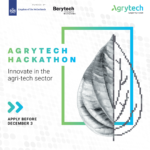 Berytech is organizing the fourth edition of the Agrytech Hackathon. Taking place online and continuing over 15 days, the hackathon is an exciting opportunity to develop your prototypes and agri-food solutions using technologies such as the Internet of Things, Big Data, and Artificial Intelligence. Learn more here.
Berytech is organizing the fourth edition of the Agrytech Hackathon. Taking place online and continuing over 15 days, the hackathon is an exciting opportunity to develop your prototypes and agri-food solutions using technologies such as the Internet of Things, Big Data, and Artificial Intelligence. Learn more here.
Agrytech Accelerator Program
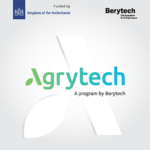 Berytech is sourcing the next agri-food innovators to help them grow their idea into a successful business with global impact. If you’re innovating in agriculture or food, join the fourth batch of the Agrytech Program and get up to $100k in funding and support to scale your business to success within 1 year. Learn more here.
Berytech is sourcing the next agri-food innovators to help them grow their idea into a successful business with global impact. If you’re innovating in agriculture or food, join the fourth batch of the Agrytech Program and get up to $100k in funding and support to scale your business to success within 1 year. Learn more here.






